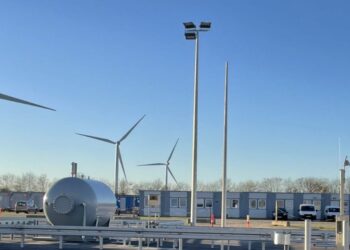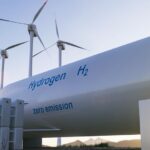Lhyfe and Centrica have announced their collaboration to jointly develop offshore renewable green hydrogen in the UK. The two companies have signed a Memorandum of Understanding (MoU). The goal is to accelerate green hydrogen as part of the country’s energy transition. This alliance is a first for the UK in the field of offshore green hydrogen.
Offshore green hydrogen pilot project in the UK to combine expertise
The pilot project will aim to combine Lhyfe’s expertise in green hydrogen production with Centrica’s experience in gas storage and infrastructure to ensure that the hydrogen produced can be safely stored and used in the UK. The energy companies will also explore an additional partnership to deploy the technology on a commercial scale alongside offshore wind power generation.
Renewable green hydrogen coupled with offshore wind power is expected to play an increasingly important role in the UK’s energy mix, especially with rapid expansion expected in both areas over the next 5-10 years.
Executives enthusiastic about offshore green hydrogen
Colin Brown of Lhyfe said this will maximize the UK’s offshore wind potential. Martin Scargill of Centrica added that their ambition is to make Rough, the offshore storage site, the largest hydrogen store in the world. The pilot project will support the UK in its journey to net zero.
UK government doubles low-carbon hydrogen production target
The UK government has announced that it will double its target for low-carbon hydrogen production by 2030. The latter increases from 5 GW to 10 GW. At least half of this production will come from green hydrogen, a renewable energy source produced from renewable electricity and water. This decision is part of the UK’s efforts to achieve carbon neutrality by 2050.
Supporting the decarbonization of industrial clusters in the UK
Hydrogen production should initially support the decarbonization of industrial clusters, such as the Humber cluster. This region of northern England is home to several large chemical and steel plants. It has been designated as a pilot site for low-carbon hydrogen production. Other use cases for hydrogen will develop as the hydrogen economy grows.
A recent report by the Climate Change Committee confirmed the critical role of hydrogen production, storage, and use in achieving the goal of a net-zero electricity system in the UK by 2035. Hydrogen can power vehicles, factories and heating networks as a clean and versatile energy source. Its production from renewable electricity can therefore contribute to significant carbon emission reductions in many sectors of the economy.











